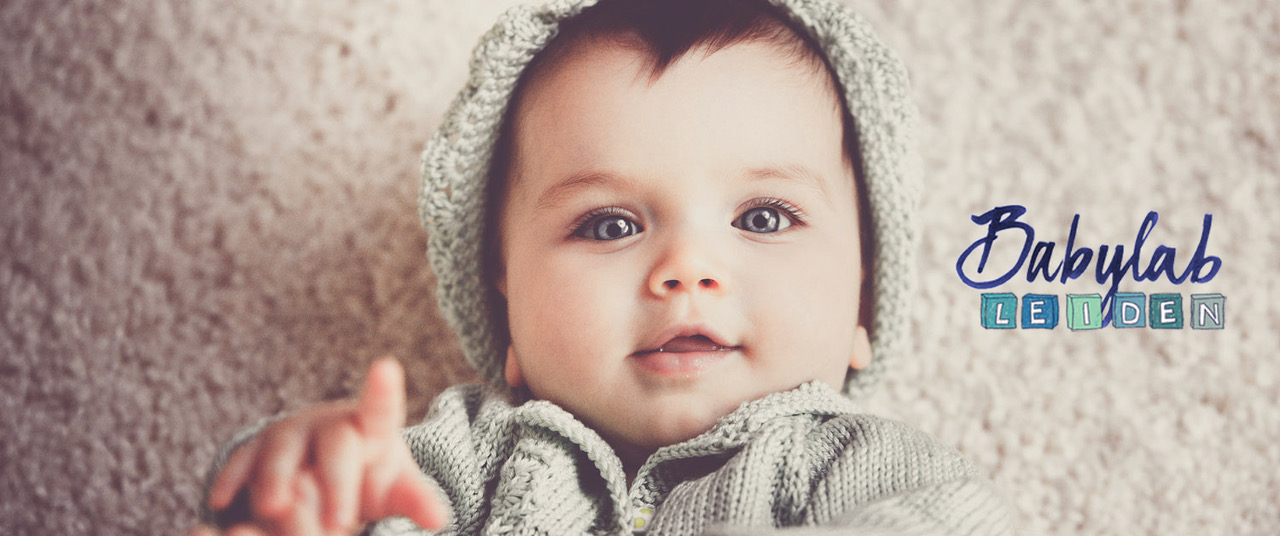Completed Studies
Below you can read about studies we have carried out in the past.
Building Blocks of Cognition
The Building Blocks of Cognition project is a collaborative study among four Dutch baby labs, funded by the NWO (Dutch Research Council). We collaborate with colleagues at the University of Amsterdam, Utrecht University, and Radboud University to replicate two high-impact studies that have formed the basis of our understanding of infant language development since their publication. The first study we attempt to replicate is very similar to the one described in the Many Babies 3.
The main difference between these two is that for this study we are looking to study seven-month-old infants. We use slightly different sounds in the two studies, but otherwise our research question and procedure are exactly the same.
In this study, your baby sits on your lap during this study and listens to a two-minute learning phase, where they hear speech sounds that follow a specific pattern. Immediately after the learning phase ends, a short test phase begins, where we play sounds that follow the same pattern as in the learning phase, or a different pattern. We see whether the entire group of babies can tell the difference between the familiar and novel pattern by measuring the amount of time they turn to listen to the different patterns that play from speakers on their left or right. Your baby controls the experiment and they get to hear what they like to hear, and stop hearing what they’re not interested in!
In the second study in this project, we are replicating a study from Kovacs & Mehler (2009), which showed that bilingual infants are better at switching between tasks than monolingual infants already at seven months old. It is important for us to make sure this study’s results hold up in multiple populations, and we intend to investigate how the level of bilingualism or multilingualism might also play a role.
For this study, your infant sits on your lap in front of a screen with a built-in eye-tracker. On the screen, we play images of toys on one side of the screen along with brief speech sounds. Very quickly your baby will begin to anticipate where they should look before the image even appears. After a couple of minutes, we switch the location of the toy to the other side of the screen. We measure whether infants are able to quickly switch their looks to the new side of the screen and whether there is a difference between how quickly monolinguals and multilinguals are able to begin to anticipate the new location of the image after the switch. It is a fun task for your baby and you’ll get to experience the whole thing with them.
This study was completed in December 2022 and resulted in two publications, one about each study.
- Read the publication describing our attempt to replicate Marcus et al. (1999).
- Read the publication about our attempt to replicate Kovacs et al. (2009).
Many Babies 3: “Rule Learning”
This study is a collaborative effort among labs around the world, with two of the four team leads based here in Leiden. In this study, we are conducting a replication study of work from Marcus and colleagues (1999). In this study, we aim to find out whether infants between 5 and 12 months old are able to extract patterns from ongoing speech. We think this ability may be foundational for learning about grammatical rules in speech and language.

In this study, your baby sits on your lap during this study and listens to a two-minute learning phase, where they hear speech sounds that follow a specific pattern. Immediately after the learning phase ends, a short test phase begins, where we play sounds that follow the same pattern as in the learning phase, or a different pattern. We see whether the entire group of babies can tell the difference between the familiar and novel pattern by measuring the amount of time they turn to listen to the different patterns that play from speakers on their left or right. Your baby controls the experiment and they get to hear what they like to hear, and stop hearing what they’re not interested in!

